Although many women have composed music throughout history, they are sadly often absent from many music history textbooks. Reasons for such an absence of women composers range from lack of access to music education to the attitudes of male reviewers and societal attitudes regarding gender roles.
It’s not something resigned to history either, as today, the total percentage of music written by women programmed by a major symphony orchestra is only 1.8 percent.
Thus, in this post, we’re going to highlight 25 of the greatest female composers throughout history and look at their lives and music. Let’s get started!
1. Hildegard Von Bingen
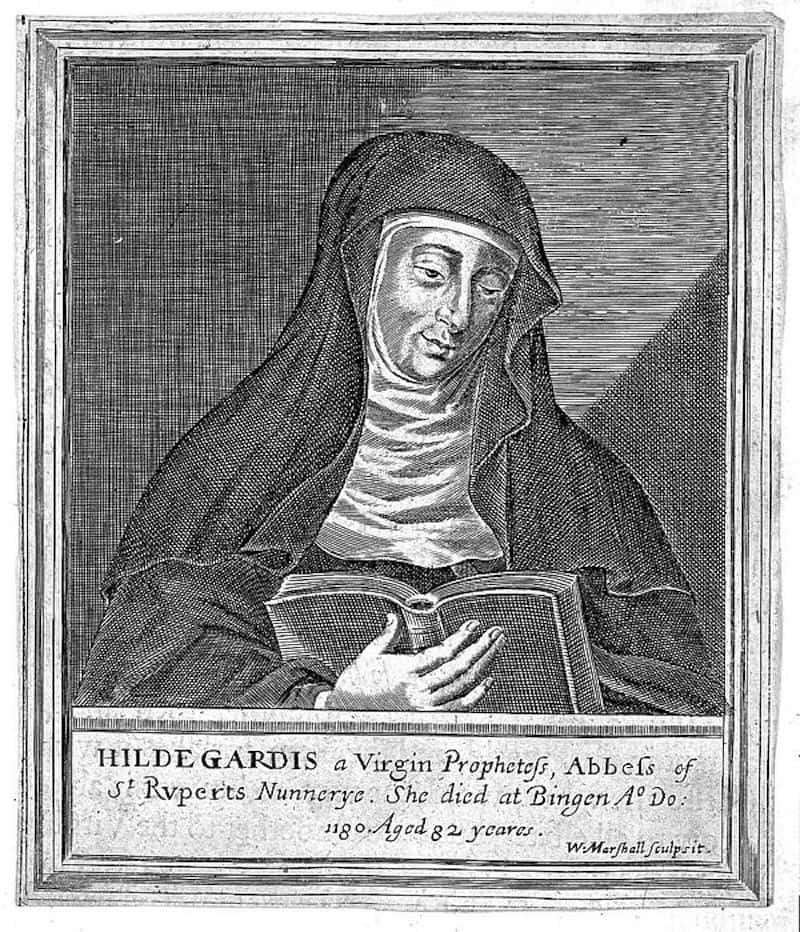
As one of the most influential composers of the Middle Ages, Hildegard von Bingen was born as the youngest of 10 children.
Experiencing visions at an early age, when she was only eight years old, her parents pledged her and her dowry to the church where her musical skills were developed as she learned how to play a ten-stringed psaltery.
With the study of music, she started to write musical compositions and composed a play in 1151, Ordo Virtutum (Play of the Virtues), which included 82 songs.
In addition to Ordo Virtutum (which is the most extensive repertoire of any composer of the Middle Ages), she also wrote 69 works, but the dates of these compositions are unknown.
2. Clara Schumann
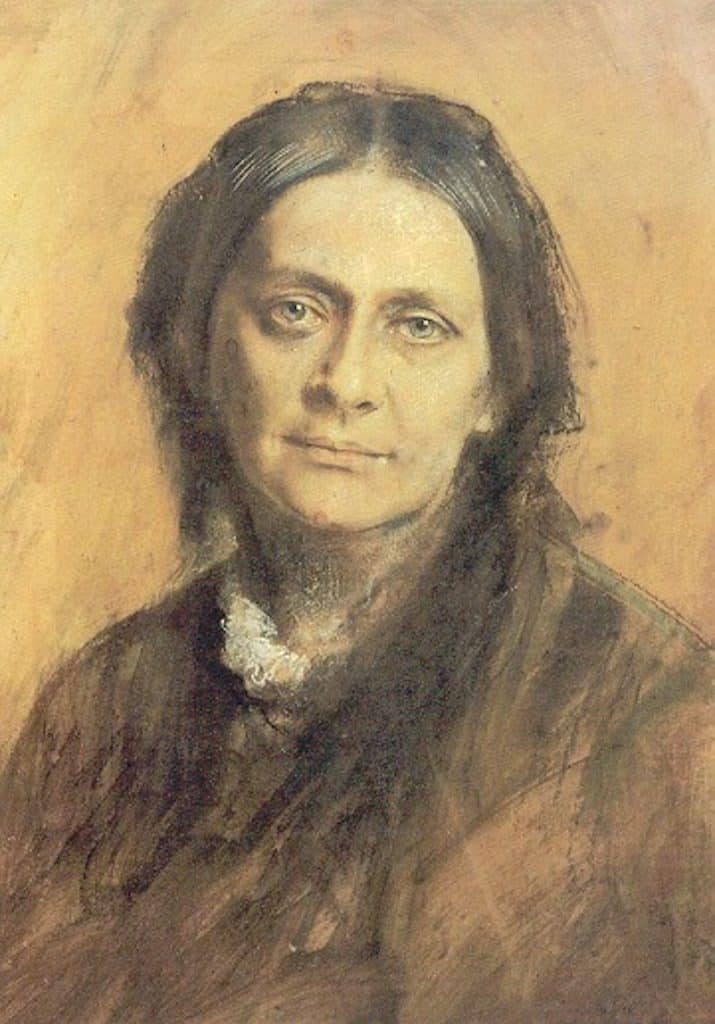
Notable female composer Clara Schumann was born in Germany in the early 19th century and was considered one of the best pianists of the time. She was married to fellow German composer Robert Schumann.
Not only was Clara one of the most accomplished pianists of her time as she toured with her husband, but she was also one of the youngest before that point, giving her first concert after the age of 11 and enjoying a successful career from the age of only 13.
Clara was known for composing and performing exciting concert pieces for piano and composed some pieces for violin and other instruments creating a legendary name for herself during a time when most performers and composers were men.
3. Fanny Mendelssohn
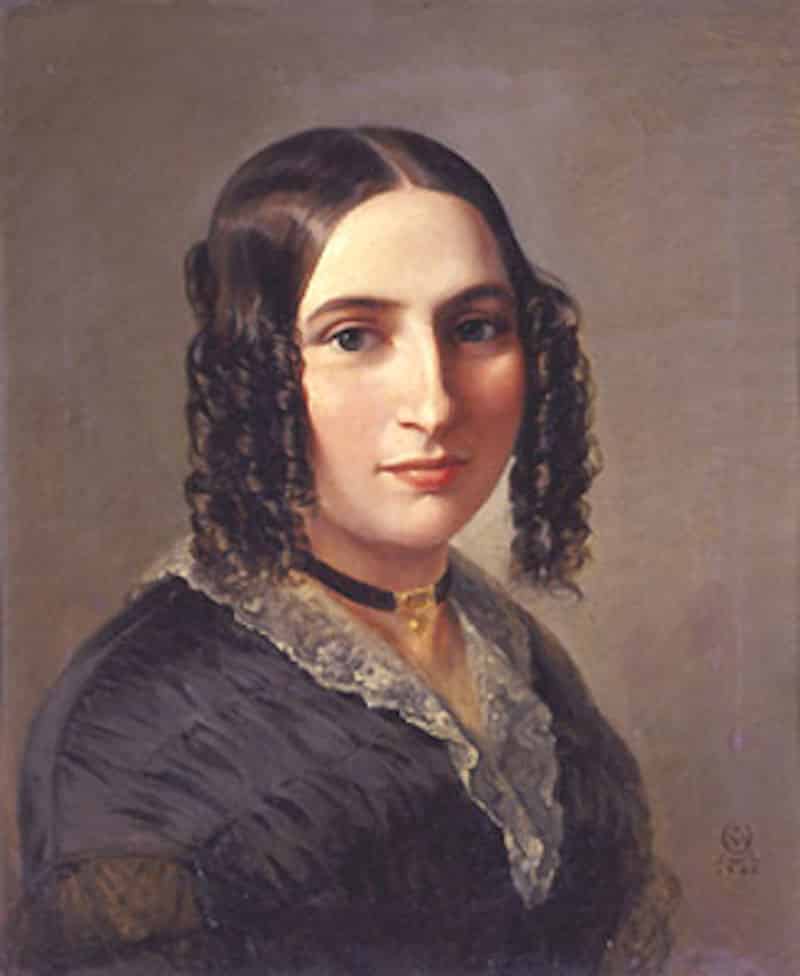
Up next is Fanny Mendelssohn, a German composer from the early 19th century. She was one of the first female composers in the world to have her works published in books read around the world.
She was raised by a family of famous composers and developed a close bond with her brother Felix, who also became a composer. As a composer, she focused mostly on piano, writing shorter pieces meant to be played in succession.
However, at the time, having any compositions published under a woman’s name was unheard of, and so only a few of her compositions were published under her name, and even a few under her brother’s name.
By the end of her life, she’d written over 500 pieces in total, and a lot of them are still played today with her most famous works, including Das Jahr, Piano Trio in D minor, Eastern Sonata, Hero und Leander, and Abschied von Rom.
4. Lili Boulanger
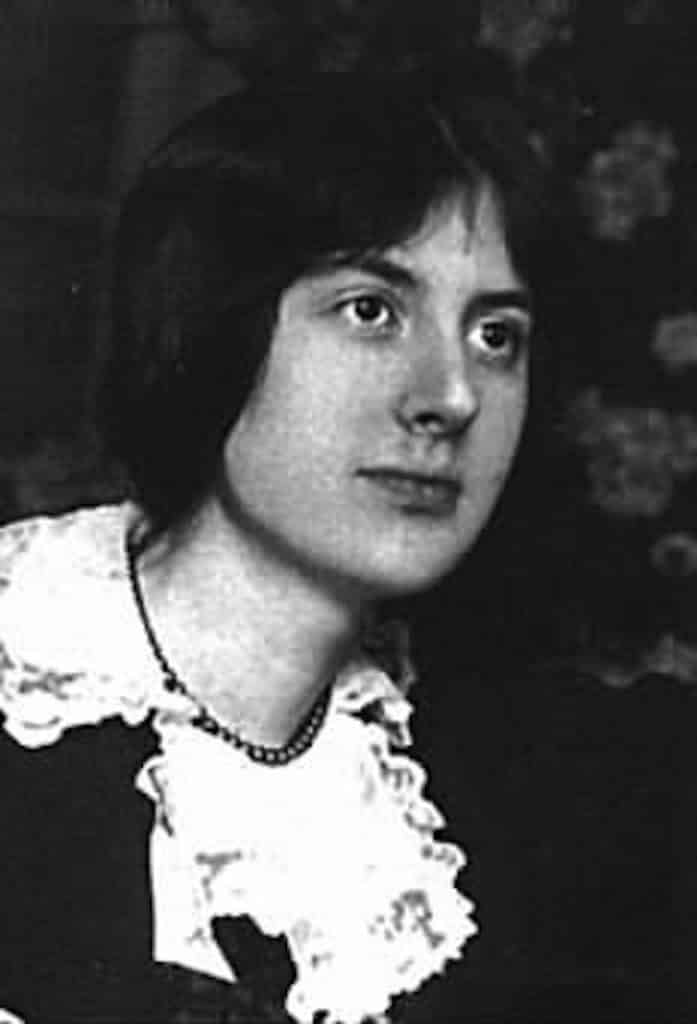
Considered a child prodigy, Lili Boulanger was a French composer who mastered many different instruments and was also the sister of another famous French composer, Nadia Boulanger.
Born in Paris, Lili, like many other prodigies, was raised in an environment of musical prowess with her mother, a Russian princess, marrying a professor from the Paris Conservatoire.
Her grandparents gained acclaim through playing the cello and singing and imparted much of that experience onto the younger Boulanger. At the young age of 19, after battling a period of illness, Lili went on to be the first woman to win the Faust et Hélène for composition.
Aside from having perfect pitch that allowed her to perform many of her own works, Lili also played the piano, violin, cello, organ, and harp. Today, Faust et Hélène remains Boulanger’s most famous work, but her other pieces are regularly performed around the globe.
5. Florence Price
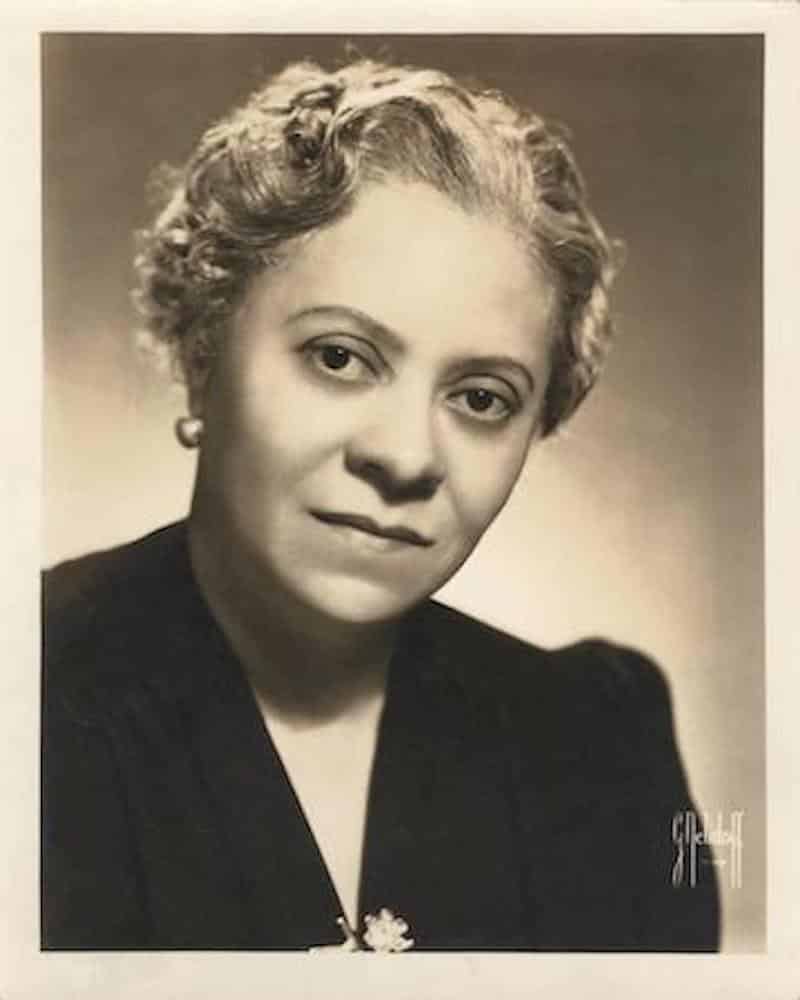
Born in 1887 in Little Rock, Arkansas, Florence Beatrice Price (née Smith) enrolled in Boston’s New England Conservatory with a major in piano and organ as well as studying orchestration and composition.
After divorcing her husband due to his abusive behavior, she moved in with her student, another African American composer and pianist, Margaret Bonds.
In 1932, Bonds and Price entered their compositions in the Wanamaker Foundation Awards, where Price won first prize for her Symphony in E Minor and third place for her Piano Sonata with a $500 bonus.
This led to a performance of the work by the Chicago Symphony conducted by Frederick Stock as part of the 1932 World’s Fair — this performance marked the first composition by an African American woman played by a major symphony orchestra.
Price died while planning a trip to Europe at the age of 66 and, according to the New Grove Dictionary of Music, over 300 of her compositions remain unpublished.
6. Rachel Portman
The first female composer to ever win an Academy Award for an original score, Rachel Portman is an English composer of music at a grand scale. She began composing music at 14, studying and reading music at the Oxford Conservatory.
She gained much of her early experience writing music for shows on the BBC and began developing a name for herself as well.
Aside from her award-winning composition for Emma, Portman went on to earn two more Academy Awards and compose several pieces for television, movies, and live performances.
Portman now has over 100 composition credits to her name and is one of the hardest-working female composers in the music industry.
7. Barbara Strozzi
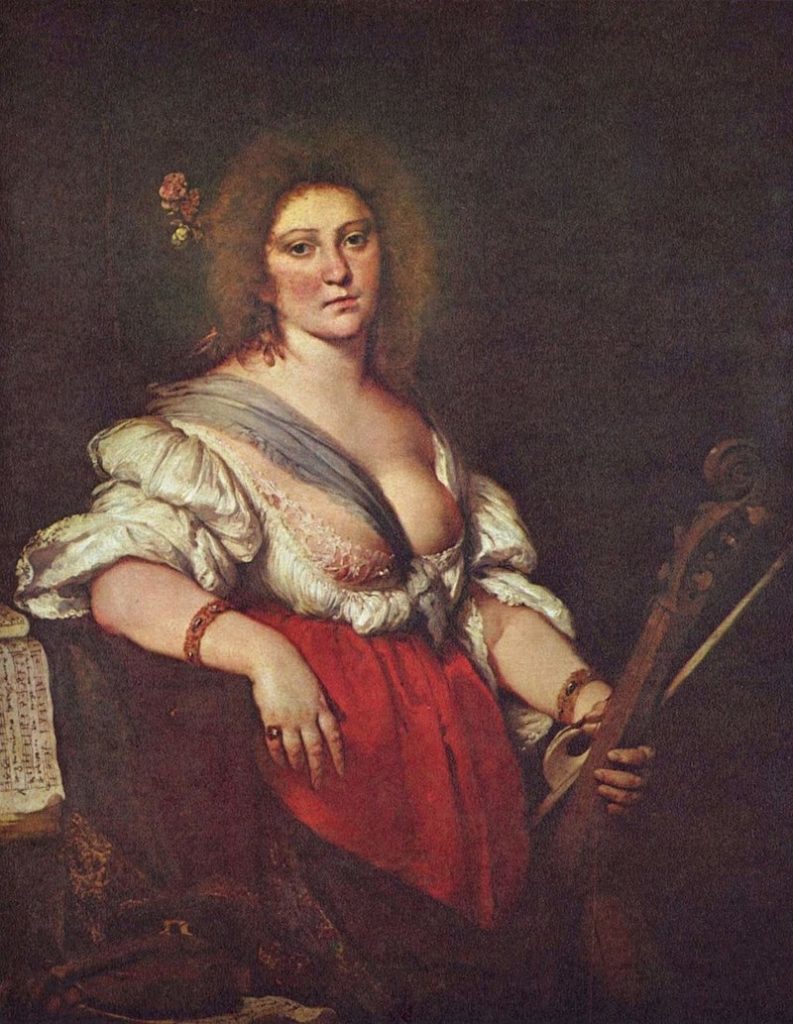
Born in 1619 and baptized on her birthdate as a child of unwed parents, Barbara Strozzi was one of the most prolific female baroque composers with over 8 collections of her compositions published while she was alive.
With her father’s encouragement, she developed her musical skills as a vocalist and playing the theorbo and lute. He also arranged for the young Storzzi to take lessons in music composition from Francesco Cavalli.
By 1635–1636, Strozzi gained a reputation as a great singer through her performances, while composer and organist Nicole Fontei published two volumes of her songs.
Unfortunately, she became the target of scandal and satirical writings with rumors that Strozzi was a prostitute (she had four children out of wedlock, which was uncommon at the time). She died at the age of 58 and is buried at the Church of the Eremitani, also called the Church of the Hermits.
8. Amy Beach
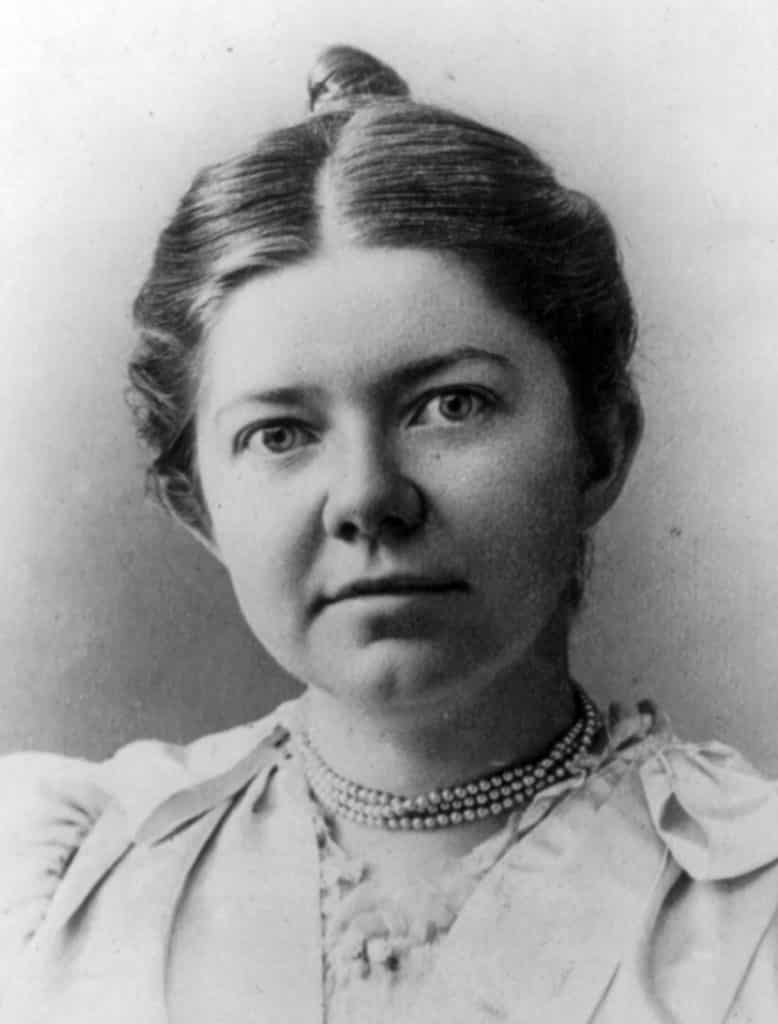
Born in 1867 in New Hampshire, Amy Marcy Beach (née Cheney) showed a tremendous aptitude for music from a very early age. She had the ability to sing 40 songs from the age of one, improvise counter-melody at the age of two, and had the ability to read at the age of three.
By the time she was four, she started composing with the help of her mother. She continued her piano studies as well as taking classes in counterpoint and harmony. Although this was the only formal instruction in music theory in composition she received, she was a very ambitious student.
In 1894, Beach made history as she wrote her Symphony in E Minor, also known as the Gaelic Symphony, which was the first symphony written and published by an American Woman.
Over her lifetime, she published 300 pieces until due to a chronic heart condition. Beach retired in 1940 and died four years later at the age of 77.
9. Teresa Carreño

Born in Caracas, Venezuela, in 1853, Teresa Carreño became a world-famous pianist known for her bravado and spirit on the stage.
However, concert halls played her music less as time wore on, and her memory is only truly served in her home country, where she is revered as one of the greatest composers to come from the region.
While her main focus was on developing concert works for piano, she also created pieces specifically for string quartets. Additionally, she boasted an angelic mezzo-soprano voice, allowing her to perform in various opera houses that also performed her composed pieces.
Carreño toured her home country of Venezuela during her youth but eventually moved to the United States, where her real career began. After some time, she was able to play concerts in Germany, Great Britain, France, and Russia, garnering the praise of the global music elite.
10. Francesca Caccini
Born in Florence, Italian composer Francesca Caccini, a.k.a. La Cecchina, began her musical career with lessons from her father, making her singing debut for the wedding of Henri IV of France and Maria de Medici at the age of 13.
Besides singing for her family’s productions, she played guitar, harp, harpsichord,theorbo, and lute, as well as composing. She wrote her first opera, La Stiava, in 1607, which premiered at the Florentine Carnival, where she continued to compose for the court of Florence.
Becoming well known for her works by 1610, Claudio Monteverdi, one of the leading composers of the early Baroque period, acknowledged her composing and other musical talents, where she became the highest-paid musician at Medici court and pursued her composing endeavor and taught music.
After she retired from the Medici family court in 1641, she continued to live in Florence until her death — a date that is not exactly known.
11. Ethel Smyth
Born into an upper-middle-class family in London in 1858, Ethel Mary Smyth was an influential English composer, conductor, and writer who made significant contributions to music during the late 1800s and early 1900s.
From a young age, she displayed a keen interest in music. Despite her father’s disapproval, she chose to follow her passion and studied music composition in Leipzig, Germany. There, she had the opportunity to interact with renowned composers such as Johannes Brahms and Pyotr Ilyich Tchaikovsky, which greatly influenced her musical style.
Smyth’s body of work is diverse, encompassing songs, piano works, operas, and symphonies. Her opera The Wreckers and her Mass in D are particularly noteworthy for their dramatic intensity and innovative orchestration.
In 1922, Smyth was made a Dame Commander of the Order of the British Empire, becoming the first female composer to receive this honor. Her legacy endures today in her music and pioneering role as a female composer.
12. Elizabeth Maconchy
Considered one of the finest composers from Great Britain and Ireland, Elizabeth Maconchy was a composer of great versatility and unfailing integrity. She was born in 1907 in Hertfordshire, England, but spent much of her childhood near Dublin, Ireland. Her love for music started at an early age, with her playing the piano and beginning to compose music at the age of six.
Maconchy moved to London when she was sixteen to study at the Royal College of Music. A remarkably productive composer, she wrote over 200 works during her nearly 60-year career. She was best known for her cycle of 13 string quartets, composed over five decades.
Despite the challenges often faced by women in the music industry, Maconchy carved out a successful career and left an enduring legacy. Her work continues to be celebrated for its originality, versatility, and emotional depth.
13. Grażyna Bacewicz
Born in Łódź, Poland, in 1909, Grażyna Bacewicz was one of the most distinguished Polish composers and violinists of the 20th century. She grew up in a musical family and showed remarkable talent from an early age.
She initially studied violin and piano, but her interest in composition soon took precedence. She furthered her studies in Paris under the tutelage of renowned composer Nadia Boulanger. This exposure significantly shaped her musical style, which combined traditional Polish folk elements with contemporary techniques.
Bacewicz was an accomplished violinist, and this mastery of the instrument is evident in her compositions. Her works, particularly her seven violin concertos, are celebrated for their lyricism, vitality, and expressive depth.
In the post-World War II years, Bacewicz achieved recognition both at home and abroad. She became the first woman to win the Polish State Prize in 1955, and her works were performed by leading orchestras worldwide.
14. Chiara Margarita Cozzolani
Born into a wealthy family in Milan, Italy, in 1602, Chiara Margarita Cozzolani took the path less traveled for women of her time. She chose to devote her life to music and religion, becoming a nun at the Benedictine convent of Santa Radegonda.
Cozzolani’s musical talent soon became apparent within the walls of the convent. She not only sang but also composed music, a rare accomplishment for a woman during the Baroque era.
Despite the restrictions imposed by the church on musical activities within convents, Cozzolani managed to publish four collections of her works — the others, sadly, were lost. Her compositions mostly include motets and mass settings, reflecting the liturgical needs of her convent.
Throughout her life, Cozzolani remained within the convent, composing music that transcended its walls and reached a wider public. It is not known when she passed away, but her name stopped appearing in convent records in 1676.
15. Wendy Carlos
Renowned as one of the most important composers in the field of electronic music and sound design, Wendy Carlos has carved out a significant niche in modern musical history. Born in 1939 as Walter Carlos, her musical journey began with piano lessons at an early age. She furthered her education with a dual degree in music and physics from Brown University.
Perhaps her most notable contribution to music was her role in the development of the Moog synthesizer, an instrument that revolutionized the sound of music and opened up new avenues of sonic exploration.
This instrument played a crucial part in her iconic album Switched-On Bach, which reinterpreted Johann Sebastian Bach’s compositions using synthesizers. The album was a massive success, earning her three Grammy Awards.
In addition to her albums, Carlos also made significant contributions to film scores. Her innovative and emotionally evocative music can be heard in films like A Clockwork Orange and Tron.
Related: Read more about other great LGBTQ+ composers here.
16. Maria Szymanowska
A pioneering figure in the world of classical composition, Maria Szymanowska was one of the first professional virtuoso pianists of the 19th century. Born in Warsaw, Poland, in 1789, she began studying piano at the tender age of 9 and made her concert debut in Warsaw when she was just 21.
Szymanowska was also a prolific composer, having composed over a hundred pieces for piano, including works for two, three, and four hands. Her catalog also includes about thirty songs for one and two voices, as well as a few chamber music works.
Her extensive tours across Europe allowed her music to reach a wider audience. During these tours, she had the opportunity to perform for and impress several luminaries of the time, including composers Gioachino Rossini and Luigi Cherubini.
Sadly, her life and career were cut short due to a cholera epidemic in 1831 in St. Petersburg. She was only 42. Nevertheless, Szymanowska’s contributions to the world of music were vastly significant and influential.
17. Joan Tower
American composer Joan Tower is renowned for her bold and energetic compositions. Born in 1938, Tower’s passion for music was ignited at a young age, and she has since grown to become one of the most influential female composers of the 20th and 21st centuries.
Among her extensive catalog of compositions, several stand out due to their impact and popularity. “Fanfare for the Uncommon Woman” is perhaps one of her most well-known pieces. This work, a response to Copland’s “Fanfare for the Common Man,” celebrates women who take risks and are adventurous.
Another significant work by Tower is “Made in America,” a piece commissioned by a consortium of orchestras across the United States. The composition incorporates themes from “America the Beautiful” and explores various facets of the American experience.
In addition to her work as a composer, Tower has also been an influential educator, serving on the faculty of Bard College for over four decades.
18. Judith Weir
Born in Cambridge, England, in 1954, Judith Weir has made substantial contributions to contemporary classical music. Her early musical studies were focused on the oboe and piano. However, her interest lay mostly in composition, and she studied under the tutelage of Robin Holloway at King’s College, Cambridge.
Weir’s compositions are known for their distinctive style, often incorporating elements of storytelling, folklore, and theater. Among her notable works are the operas A Night at the Chinese Opera, Blond Eckbert, and The Vanishing Bridegroom.
In addition to her composing, Weir has also held important roles in the promotion of new music. In 2014, she was appointed as the Master of the Queen’s Music, becoming the first woman to hold this prestigious position.
19. Germaine Tailleferre
Born in 1892 in Saint-Maur-des-Fossés, Val-de-Marne, France, Germaine Tailleferre showed an early fascination with music. Despite her father’s initial opposition, she pursued her passion and embarked on a remarkable journey in the field of music.
She studied at the Paris Conservatory, where she honed her skills under the guidance of renowned composers. Later, she became one of the members of the influential group Les Six.
Tailleferre played a vital role in shaping the music of the early 20th century. Alongside fellow composers such as Milhaud, Poulenc, Honegger, Auric, and Durey, she rebelled against prevailing musical trends, seeking to create a distinctly French sound that moved away from the heavy influence of Wagnerian romanticism and impressionism.
Throughout her prolific career, Tailleferre composed symphonic, chamber, film, and radio music. Some of her most famous compositions include the Harp Concertino, the Piano Concerto, and various ballets like Le marchand d’oiseaux.
20. Louise Farrenc
A remarkable composer and pianist of the 19th century, Louise Farrenc, who was born in 1804 in France, faced significant challenges as a woman in a male-dominated field. Despite this, she achieved considerable success and made lasting contributions to the world of classical music.
She studied piano with renowned teachers, including Ignaz Moscheles and Johann Nepomuk Hummel. Her training also extended to composition, and she studied under Anton Reicha, a prominent composer and theorist.
One of Farrenc’s most celebrated works is Symphony No. 3 in G Minor, which showcases her skillful orchestration and expressive melodies. This symphony, along with her other two symphonies, challenged the prevailing notion that women were incapable of composing large-scale orchestral works.
In addition to her compositions, Farrenc was also an accomplished pianist. She performed extensively throughout Europe and received critical acclaim for her virtuosic and expressive playing.
21. Rebecca Clarke
A pioneering figure in the early 20th-century classical music scene, Rebecca Clarke was an English composer and violist. Born in 1886 in Harrow, England, Clarke’s musical journey began at a young age when she showed exceptional aptitude for the viola.
She studied at the Royal Academy of Music in London, where she honed her skills as both a performer and composer.
As a composer, she explored a diverse range of genres, including chamber music, choral works, orchestral pieces, and songs. One of Clarke’s most renowned compositions is her Sonata for Viola and Piano. Her chamber music, piano trio, and piano quintet are also among her notable contributions to the chamber music repertoire.
Clarke had a long and successful career despite facing numerous challenges as a woman composer in a male-dominated profession. She lived to the age of 93, passing away in 1979.
22. Charlotte Bray
Born in 1982, the British composer Charlotte Bray has emerged as an outstanding talent of her generation. Championed by prestigious institutions such as the Royal Opera House Covent Garden, London Sinfonietta, and Birmingham Contemporary, Bray’s career trajectory has been nothing short of remarkable.
Bray’s education and credentials speak volumes about her talent and dedication to music. However, what sets her apart are her compositions.
Among Bray’s most recognized compositions is Ungrievable Lives, performed by the Castalian String Quartet at the New College Chapel, University of Oxford. Her work Crossing Faultlines, a 3-song cycle about women’s experiences in the workplace, is also quite notable.
Today, Bray continues to be a leading figure in the music industry, and her influence will undoubtedly continue to be felt for years to come.
23. Isabella Leonarda
Up next, making significant contributions to the musical scene during the Baroque era is Isabella Leonarda, born in 1620. At the age of 16, this young musician joined the Collegio di Sant’Orsola, an Ursuline convent. It was during her time in the convent that she began composing music.
Leonarda’s compositions primarily encompassed religious works, including motets and Masses. Her extensive opus list also includes instrumental sonatas, making her one of the first women to compose in this genre. One of her most notable works is her “Sonata Duodecima.”
Despite the relative seclusion of her life in the convent, Leonarda’s music found its way into the wider world. Her pieces were published in numerous collections, and she gained recognition for the exceptional quality of her work. In fact, she was so prolific that she is often referred to as the most published of all nun composers.
24. Ruth Crawford Seeger
Born in 1901, American composer Ruth Crawford Seeger broke new ground in the world of music, not only as a woman but also as an avant-garde composer whose work continues to inspire musicians today.
Seeger’s early musical training began with piano lessons, and she later attended the American Conservatory of Music in Chicago, where she studied piano and composition.
Her String Quartet 1931 is often cited as her masterpiece. This work exemplifies her innovative treatment of dissonance and her pioneering use of a method she termed “dissonant counterpoint.” This quartet won her the coveted Guggenheim Fellowship, making her the first woman to receive this award.
Beyond her own compositions, Seeger played a significant role in the American folk music revival of the mid-20th century. She became deeply involved in collecting and transcribing American folk songs. Her arrangements of these songs are still widely performed today.
25. Jocelyn Pook
We end this list with Jocelyn Pook, a contemporary British composer. She’s known for her innovative approach to music that blends classical traditions with electronic elements and voice.
Born in 1960, Pook began her musical journey studying the viola at the Guildhall School of Music and Drama in London. She started her career as a professional musician playing for several orchestras and pop groups, notably the electronica group Electra Strings.
Pook’s breakthrough as a composer came with her haunting and evocative score for Stanley Kubrick’s film Eyes Wide Shut in 1999. Her piece “Masked Ball” created a stir with its unique and unsettling sound, earning her widespread recognition.
Throughout her career, Pook has composed scores for numerous films, TV shows, and theatre productions. Some of her notable works include the scores for the films The Merchant of Venice and Brick Lane.
Summing up the Greatest Women Composers
Although not quite as prevalent in today’s modern world, there is still a lot of gender inequality in the music industry.
However, these women composers have shown that it doesn’t matter what your race or gender identity may be — if you are talented and skilled enough to make beautiful music then people will appreciate your art no matter who you are.

